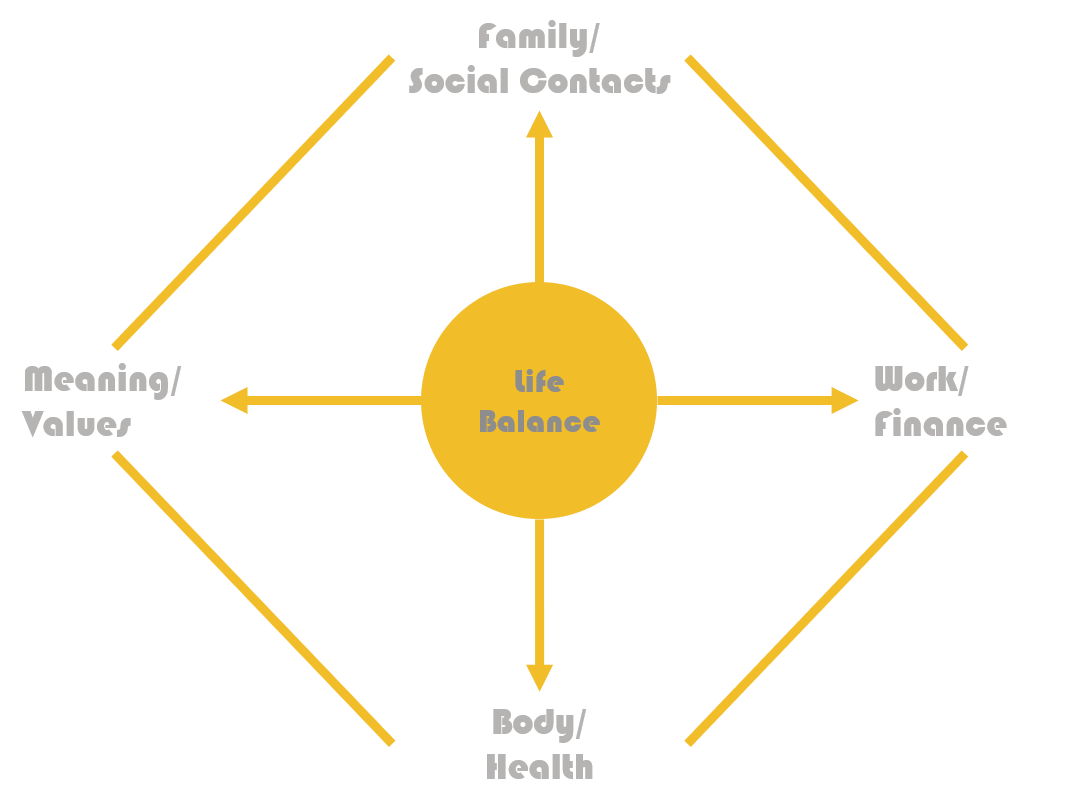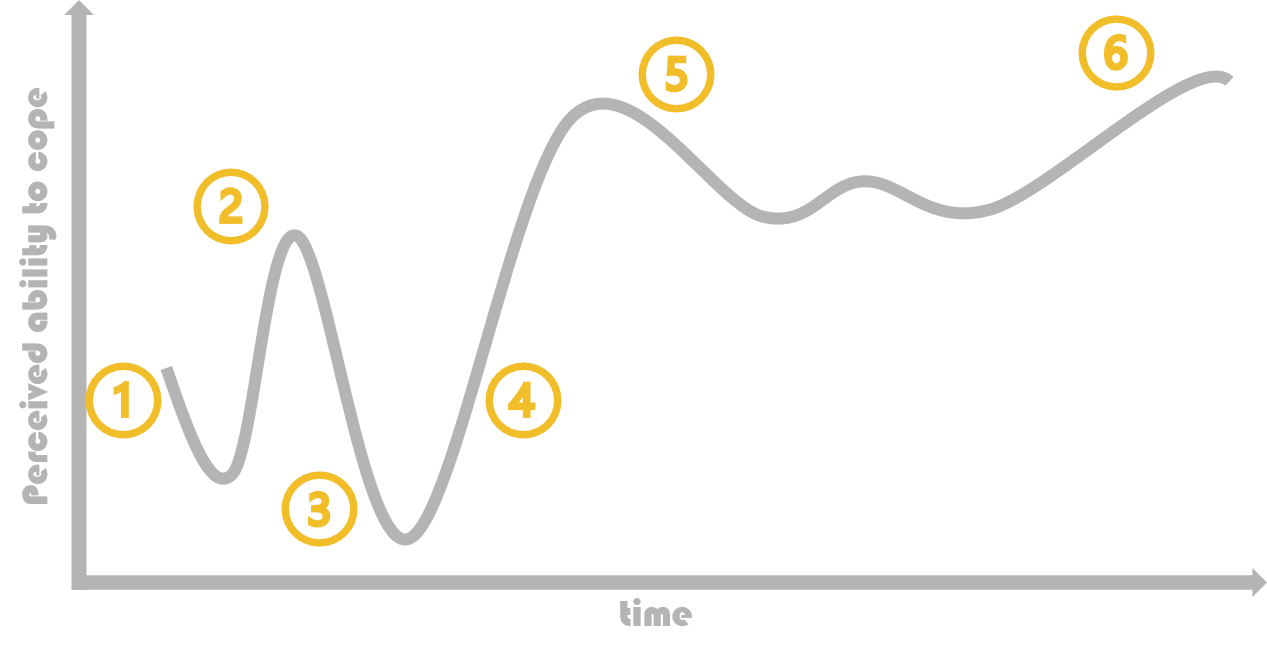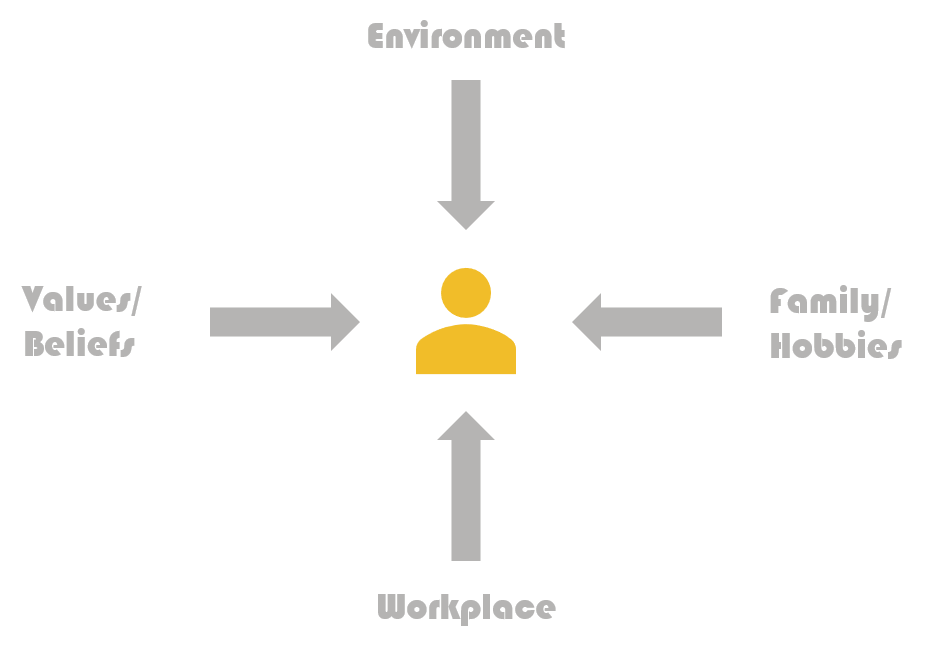Life Balance
There is a lot of talk concerning finding your life balance. There is also more than one life balance model out there, but the one I like is from Nossrat Peseschkian. Find our why I like his model the best.
The Work-Life Balance Model from Nossrat Peseschkian takes into account the two well-known dimensions work and family, but adds to those also value and health.
Family & social contacts
This of course includes Friends and Family but also social engagement and devotion and acceptance. If this is not in your balance there might be conflicts with your partner, friends or family. You also might feel alone.
Work & Finances
Here we have our job, money and success. This also means prosperity and wealth. Also included here is education as well as continued education and efficiency and regeneration. The work part might show in conflicts at work, your self-esteem or financially.
Health & Fitness
This includes a healthy diet, rest and relaxation, your expectations of life, your fitness and overall health. If Health is not in balance you might not feel too well, you might be sick, or your efficiency is not what it used to be.
Meaning & Culture
This includes love, religion, values, and sense of life, self-fulfillment and questions of the future. This part is very often forgotten, but if you don’t balance this right for you, you might end up losing your footing or stagnating.
This balance is unique for all of us since it is based on our individual needs and goals. I will help you finding out your needs and how your life is in a good balance. Than we will look at the discrepancies and work with them towards your goal.
Do you find yourself in these descriptions? Contact me for a noncommittal initial discussion and take the first step to get your life back into balance.

Pisco Sour of life
What does a cocktail and your life balance have in common?

Tanja Haag
What others say about me
What you always wanted to know about online Life Coaching
A Life Coach will help you to take a good look at your life and see all the good things as well as work with you on the topics you would like to improve. He will help you to see the strength you have, the resources you can build on and change the perspective on some things.
One thing is clear here and that is that a burn-out does not occur overnight, but over a longer period of time, sometimes even years. Otherwise, there are many possible factors that promote burn-out.
If one follows the opinion of the WHO, burn-out only develops at the workplace, through the external stress there. But there are also other factors that play a big role here. And often it is not only an external stress, but this is still strengthened by internal factors.
Here, one can particularly highlight 3 groups of people. What all three groups have in common is that they are people who are highly self-motivated and want to achieve a lot on their own initiative. Only the motives are different.
Group 1: Perfectionists
In this group we find people who are very ambitious and committed to the tasks assigned to them and who want to get it right down to the last dot.
Group 2: Performance-oriented people
This group consists of very determined, dynamic people. They like to exert themselves and often enjoy doing so. However, if there is a lack of recognition from outside or if there are failures, this situation can become very stressful. This group also needs a certain amount of freedom to pursue their goals and needs a high degree of self-responsibility.
Group 3: Selfless people
This group approaches things with a lot of idealism. They are often selfless and responsible. They care about the welfare of others above all else. We usually find them in social professions.
These groups certainly do not describe all unambiguously and there are certainly also affected and endangered who have a mixture of the described characteristics, but should also only give an impression.
Life Balance
There is a lot of talk concerning finding your life balance. There is also more than one live balance model out there, but the one I like is from Nossrat Peseschkian.
Learn more





